I see these mistakes all the time, and I’ve done them myself too. Here are 8 Typical Racquet Mistakes that I see many club players do.
Do you agree with my list of typical racquet mistakes? Did I miss any? Let me know in the comments below.
1. Playing with old strings
The most common mistake among club players is that many players leave their polyester strings in the racquets for too long. If you’re using a multifilament, gut, or synthetic gut string, you can play until it breaks (or you feel like the tension has dropped too much), but polyester strings go dead, lose their elasticity, and might end up hurting your arm. If you want to optimize your tennis and avoid injury, make sure you re-string polys every 20 hours of play.
2. Playing with a too demanding setup
I’ve done this myself for years. I’ve used heavy racquets with small head size because I couldn’t control the lighter, more powerful ones. Why couldn’t I control them? Partly because my footwork wasn’t good enough, and I didn’t have a natural topspin technique. So instead, I used heavy and small racquets that are difficult to use to generate power and depth. I could have had better results with a racquet that helped me a bit more.
Once you start mastering the topspin stroke, a lighter racquet with a bigger head size will help you play better tennis with more consistency. The issue here is that it won’t be easy to work on a natural topspin stroke using a heavy racquet with a small head size. Those racquets are made for old-school tennis where you hit flat and through the court.
I see many players swinging the Wilson Pro Staff RF97A because it offers plow-through and stability (and because Roger Federer uses it, but more about this below). But using such a heavy and demanding racquet can lead to arm issues and shoulder problems as most players will struggle to time the ball and swing relaxed with such a heavy stick.
3. Using the believed racquet setup of your favorite pro
One of the most common setups on the club circuit is a Babolat Pure Aero with Babolat RPM Blast 1.30 gauge strings strung at 55 lbs. Why? Rafa. The problem is, you’re not Rafa, and neither am I. And to add to that, this setup is not precisely what Rafa uses either. Rafa uses the first edition Aero Pro Drive modified to a beastly weight that most club players would have trouble swinging efficiently.
The main issue with using a stiff racquet and stiff strings is that it might lead to arm problems. I’ve consulted hundreds of players over the last two years, many of whom have gotten tennis elbow from using a stiff racquet setup.
4. Using a stiff string and stiff racquet
A stiff string in a stiff racquet is a recipe for arm issues unless you have excellent technique and physique. Be careful. Tennis elbow, wrist issues, and shoulder pain are on the rise among tennis players, and one reason is that most modern racquets are stiffer, and most club players use stiff polyester strings.
You can play tennis on a high level using a softer string like a synthetic gut, gut, or multifilament string. These string types are better for the arm and give you more power. Another benefit is that they will break, making it easy to understand when you need new strings.
5. Using the factory string
Many players who are not into tennis gear buy a racquet and use it until the strings break without giving it a second thought.
Racquets rarely, if ever, come with high-quality strings when you buy a racquet strung. There is a reason most tennis racquets are sold unstrung, and it’s because the string choice and tension are all so personal that most knowledgeable players already have a setup in mind for a racquet. The factory or demo string might be old, have dropped tension massively, or just cheap, which means that the string will do your racquet a disservice.
When strings are old, they start moving all over the place, and it will be tough to control the ball. If you feel a lack of control, it’s time for a re-string!
6. Buying a cheap racquet
I touch upon this in my beginner to lower-level intermediate racquet video. Don’t get a cheap racquet because you’re new to the sport – it can detract you from enjoying the game and improving at a quicker rate. If you don’t have a lot of money to buy a good racquet, you can still get a good older model for a friendly price or find one on the used market for an even better price.
7. Replace your grip/overgrip
Many players use a grip that was ready for the trash can six months ago. If you use an overgrip, they’re cheap to replace. Don’t let it go black of dirt and slippery – you might risk losing your grip on the racquet and it can fly out of your hands.
If you use a base grip – they’re also relatively cheap, and getting a new one will make the racquet feel brand new again.
8. Slapping lead tape all over the racquet
The over-belief in lead tape and adding weight is more of a tennis nerd issue and something I’ve been prone to do myself. It’s funny, as I’m improving as a player, I prefer lighter racquets. It’s because I feel more confident hitting the sweet spot (and don’t need all that weight for stability) and also because my racquet swing speed is faster.
I have consulted many players who add weight all over the hoop of the racquet to increase stability and plow-through. But if you work on your technique and footwork, you don’t need all that weight to get a clean hit. You will then be able to hit pretty well with a 280g racquet.
Many tennis nerds play with heavier racquets than some of the players on the pro tour. Using such a heavy racquet is rarely a good idea and might lead you to hit shots late and off-center.
Those are my 8 Typical Racquet Mistakes. Did I miss something? Do you disagree? Please let me know in the comments below.
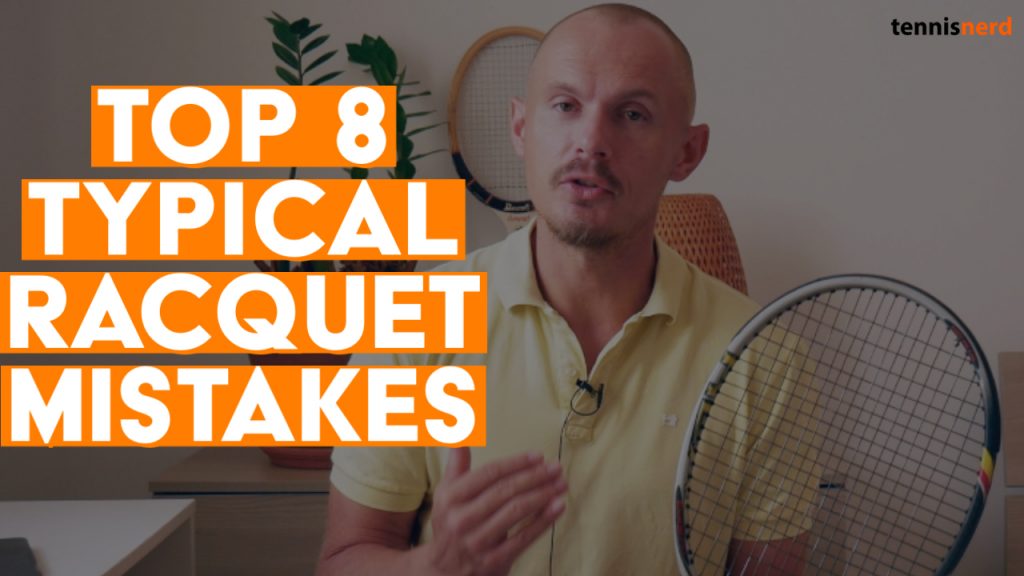
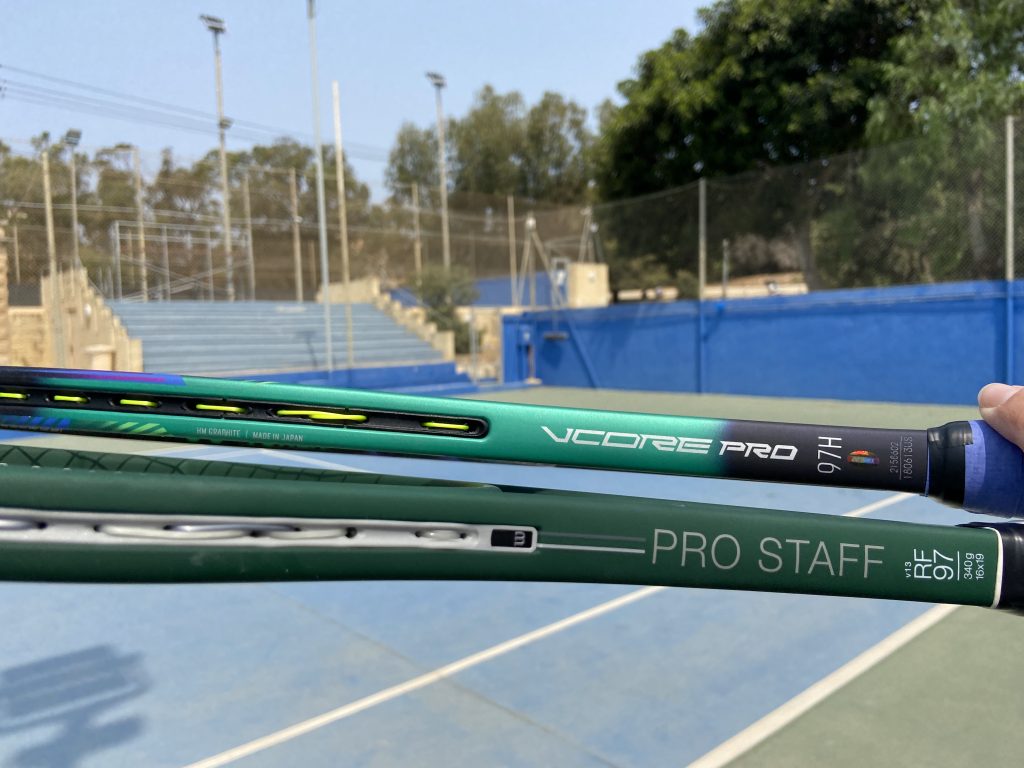
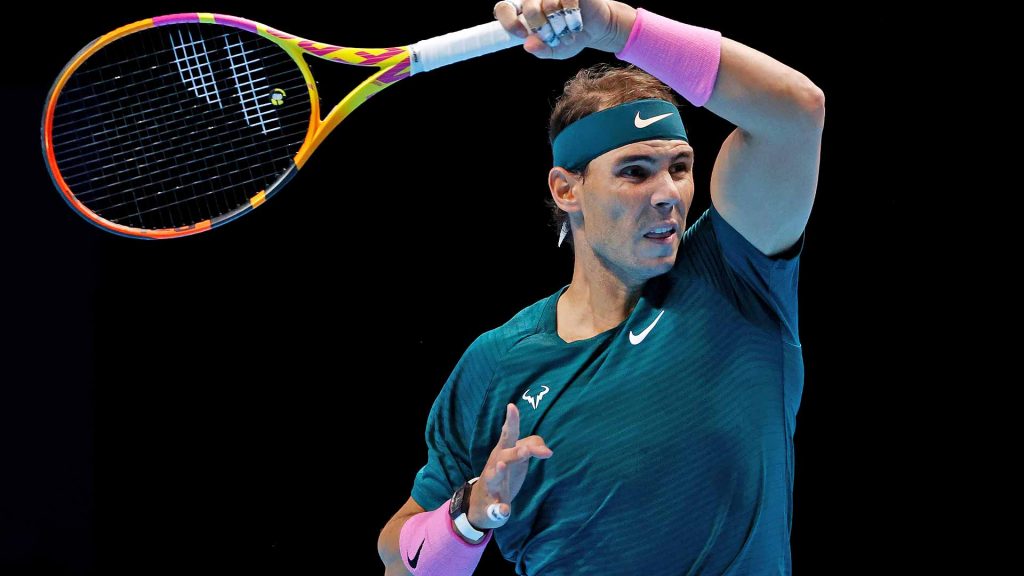
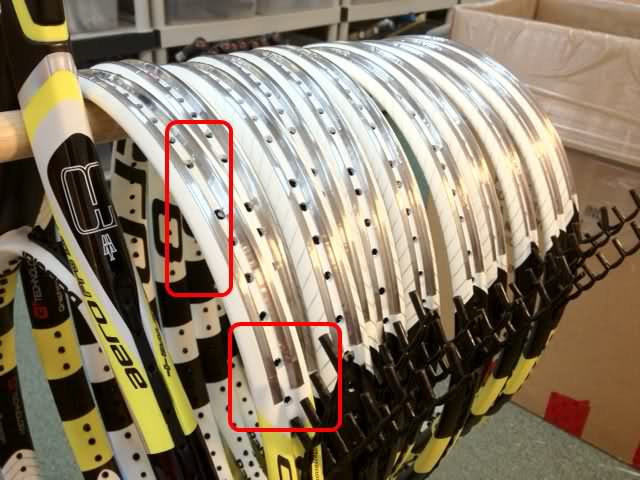



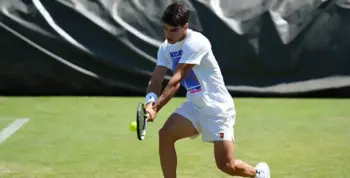

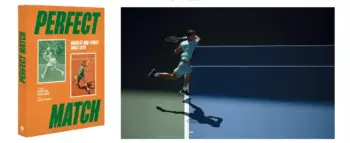
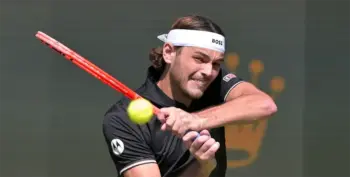

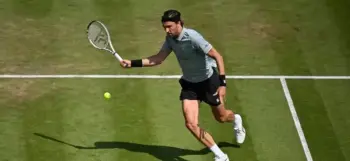
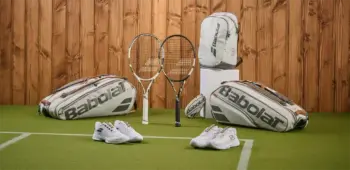



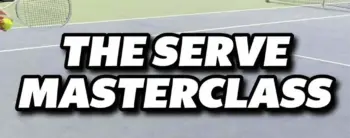

Great article! What’s your set-up weight-wise these days?
Thanks 325-330 strung
In order:
1. Playing with old strings. Emphatically agree! I suggest to my students who are avid players playing 3 or more times a week that carry at least TWO identically weighted, balanced frames, strung the same but two weeks apart. By the end of the second week playing with one frame I have them pull out the second to actually EXPERIENCE the difference a fresh set of strings can make. EPIPHANY!
2. Playing with too demanding a set up. I see where you’re going but… I started playing with a wood Dunlop Maxply Forte. It had a tiny sweet spot and weighed 367 grams! THAT would be demanding for anyone especially a 10 year old. But it made me concentrate, set up early, execute the stroke and WATCH THE BALL. Today, with lively string beds, huge sweet spots, light, stiff frames, there are many ways to “cheat” but there is no substitute for fundamentals. If you demand more of yourself, you should not be put off by a demanding frame. Your learning curve may be longer, but it will be deeper and your “tennis IQ” will be higher in the end.
3. Using the believed racquet setup of your favorite pro. “Win on Sunday. Sell on Monday” was for years the mantra of the auto industry. It applies today to tennis, perhaps more so. As a marketing pro, you know how consumers have been conditioned to consume. My students who have obviously bought the sizzle are crestfallen when I tell them they spent $250 on a paint job. I let them borrow one of my 20 year old sticks and suddenly a light bulb goes on and another “Tennis Nerd” is born!
4. Using a stiff string and stiff racquet. Agree. If a player is committed to a stiff racquet and doesn’t want to be a regular customer of his orthopedist, their goal should be to soften the impact with at a minimum a hybrid set up. Experimenting with string combinations and tensions can seem daunting (or fun) to the extent they feel they need a sherpa, but then that’s why there are so called “professionals”. :)
5. Using the factory string. Never.
6. Buying a cheap racquet. I see nothing wrong with shopping for a “deal” but before buying, get educated. Demo lots of frames. Ask to borrow racquets to hit a few balls with whomever you happen to be playing. Gain experience…or be prepared to build a racquet collection and become another Tennis Nerd! lol
7. Replace your grip/overgrip. Here I think most players make a BIG mistake, buying a racquet with a grip that feels right then wrapping it with an overgrip as if that isn’t going to make a difference! The result is a handle that is too big to afford a loose and relaxed grip. I suggest buying a size smaller in anticipation of wrapping it! Another mistake is not considering the environment. In a controlled climate on an indoor court, most players would not have an issue with a leather grip. But outdoors in the cold it would feel slick so a tacky overgrip would be apropos. However, in the 90F+ temps and 85% humidity here in South Florida, an absorbent overgrip is a “must”!
8. Slapping lead tape all over the racquet. Not mentioned anywhere in this otherwise comprehensive piece is how adding weight can upset the balance of a frame, for better or worse. I counsel that a player should use the heaviest racquet they can swing comfortably and for all but advanced players that weight should be in the handle. A heavier, considerably “head light” set up can actually feel faster through the air than the lighter “hammer” set ups of yore. It’s actually easier on the arm and as relates to #7, replacing a factory grip with a leather grip to add weight should be considered a “best practice”, IMO.
Hi Jonas
Very accurate advice on rackets – I have one query about lighter rackets -dont they jar your arm with any off- center shots ?
regards Ed
Lead tape means harder serve but potentially a lot more UEs on groundstrokes. Fewer UEs is best for most people. Nadal experimented with more lead tape. Was hitting his serves in the 130’s for one US Open. But he lost precision on his forehand.